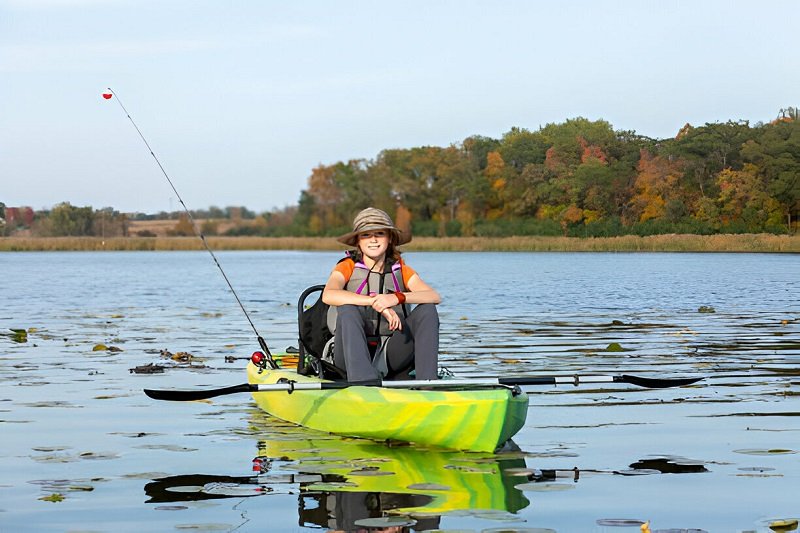Fishing has always been considered one of civilization’s oldest sports. The fascination of man with water has reached its pinnacle with the development of a specific type of boat geared for this historic pastime – the kayak. Have you ever stopped to ponder the history behind these graceful watercrafts? How did our ancestors fish, and how has kayak fishing evolved to where we are today? In the following chronicles, we will delve deep into the historical transformation of fishing kayaks.
The significance of understanding how fishing kayaks have evolved gives us an intriguing insight into our innovative and problem-solving nature. As we journey through time, we discover how our ancestors have tackled travel and fishing in rivers and seas, explored new lands and navigated through challenging terrains. Together, let’s uncover the complex chronicles laden with exciting advancements and technological leaps that have shaped the modern fishing kayak.
Conceptual Beginnings – The First Float
The conception of the first fishing kayaks can be traced back to the indigenous Arctic people, the Inuit. The Inuit utilized driftwood or animal bones tied together with caribou skins to create a watertight, lightweight kayak. They were mainly used for hunting, but soon their efficiency warranted their use for fishing.
The traditional kayak adapted to the user’s needs. Some were wide and stable, ideal for fishing and carrying heavy cargo, while others were slim and swift, designed for speed and handling in fast-moving waters. The design was meticulous, taking into account the harsh and unforgiving polar climate.
Evolution Through Materials and Design
As time rolled on, the kayak’s evolution saw a departure from wooden skeletons and animal skin. Cardboard was briefly adopted in the late 19th century. The 1920s heralded an innovative shift to the use of canvas and rubberized material for increased durability.
Classic kayak shapes evolved through the stages of history, tackling the demands of various fishing conditions. They grew longer and streamlined to help navigate flat-water lakes and open ocean expanses. The development of wider, more sturdy design was championed for river and quick water fishing, providing stability over speed.
Material Metamorphosis – Transition to Plastic
Arguably, the most significant leap in kayak innovation took place in the 80s with the advent of the plastic kayak. The advent of roto-molded plastic as the material of choice marked a turning point in kayak history.

Fishing Kayak
This revolutionary shift to plastic opened up a universe of possibilities. With plastic, kayaks could now be mass-produced at a lower cost, while also attaining higher durability, lighter weight, and resistance to the elements. The initiative to plastic was a game-changer that brought kayaking to the masses.
The Dawn of the Sit-On-Top Kayaks
To further make the sport more accessible, the “sit-on-top” fishing kayak was introduced. Originally deemed a radical design departure, these models now dominate the angling world.
The design offered uncluttered access to fishing gear, easy re-entry from the water, and a great sense of freedom. It was safer, more comfortable, and broke the barriers to entry for newcomers and angling enthusiasts who wanted a bit more comfort to their fishing outings.
The Modern Times: Kayak Fishing Gets a High-tech Upgrade
The modern fishing kayak is a technological marvel. Today’s angler enjoys a plethora of amenities such as rod holders, swivel chair platforms, built-in coolers, GPS, and fish-finding electronics. These fishing kayaks cater to every need of the modern angler, and have revolutionized the sport of kayak fishing.
Pedal kayaks have also emerged, combining exercise with fishing, while motorized kayaks offer an easy option for those who prefer leisure and comfort over exertion.
The Future – Sustainable and Eco-friendlier Kayaks
As we move forward, eco-friendliness and sustainability are becoming critical considerations in kayak design and manufacturing. Bioplastics, and recycled materials are being welcomed into kayak construction, setting a trend for an environmentally considerate future.
Conclusion
The journey of the fishing kayak from humble beginnings to the technologically packed sporting marvels of today is a testament of human innovation. From the Inuit bone and skin kayaks, through material transformations, design upheavals, and tech-integrations, the fishing kayak has indeed come a long way.
As we look back at the evolution of fishing kayaks, we not only witness the progression of technology and design, but we also see the resilience, adaptiveness and the innate desire of humanity to be better, to do better. The kayak stands at the intersection of history, innovation and human ambition, and continues to sail forward with new ecological strides and advancements. With bated breath, we anticipate where the currents of invention will steer the fishing kayak next.














Leave a Reply